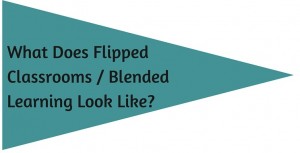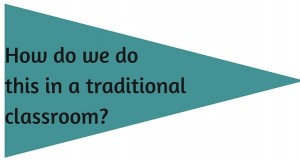Blended Learning and Flipped Classrooms
Objectives for this Open Educational Resource
1. Examine flipped classrooms and blended learning.
2. Discuss the pros and cons of flipped classrooms from several vantage points.
3. Analyze situations where flipped classrooms could be implemented and the various methods of implementation.
Introduction
A flipped classroom is where the traditional lecture and homework components in a classroom are reversed. Students will watch prepared lectures at home, and then do active learning activities during the classroom time. The teacher becomes more of a facilitator, guiding instruction and higher learning to their students. Students are able to access the teacher during the more difficult assignments, instead of trying to complete them at home alone. READ MORE HERE
Blended learning is where some components of a flipped classroom are incorporated, but at other times, a traditional classroom philosophy is retained.

- Active Learning
- Problem Based Learning
- Real-World Application
- Supplemental Instruction
- Tutoring/Individual Instruction
Right now, educators do not have time to implement these methods of instruction in a traditional classroom. By implementing a flipped classroom or blended learning, time can be created to increase students understanding on the topics being covered.



 Follow
Follow